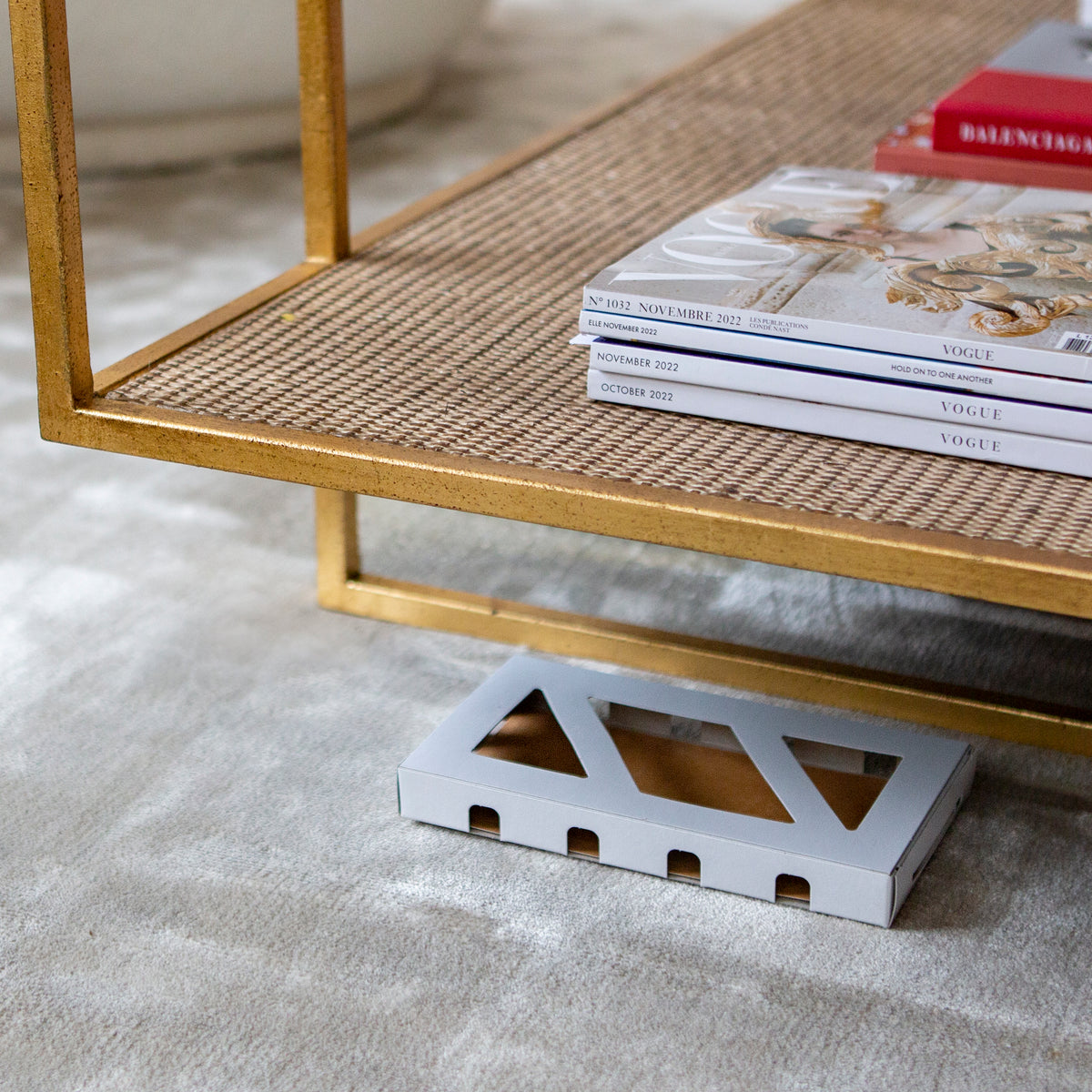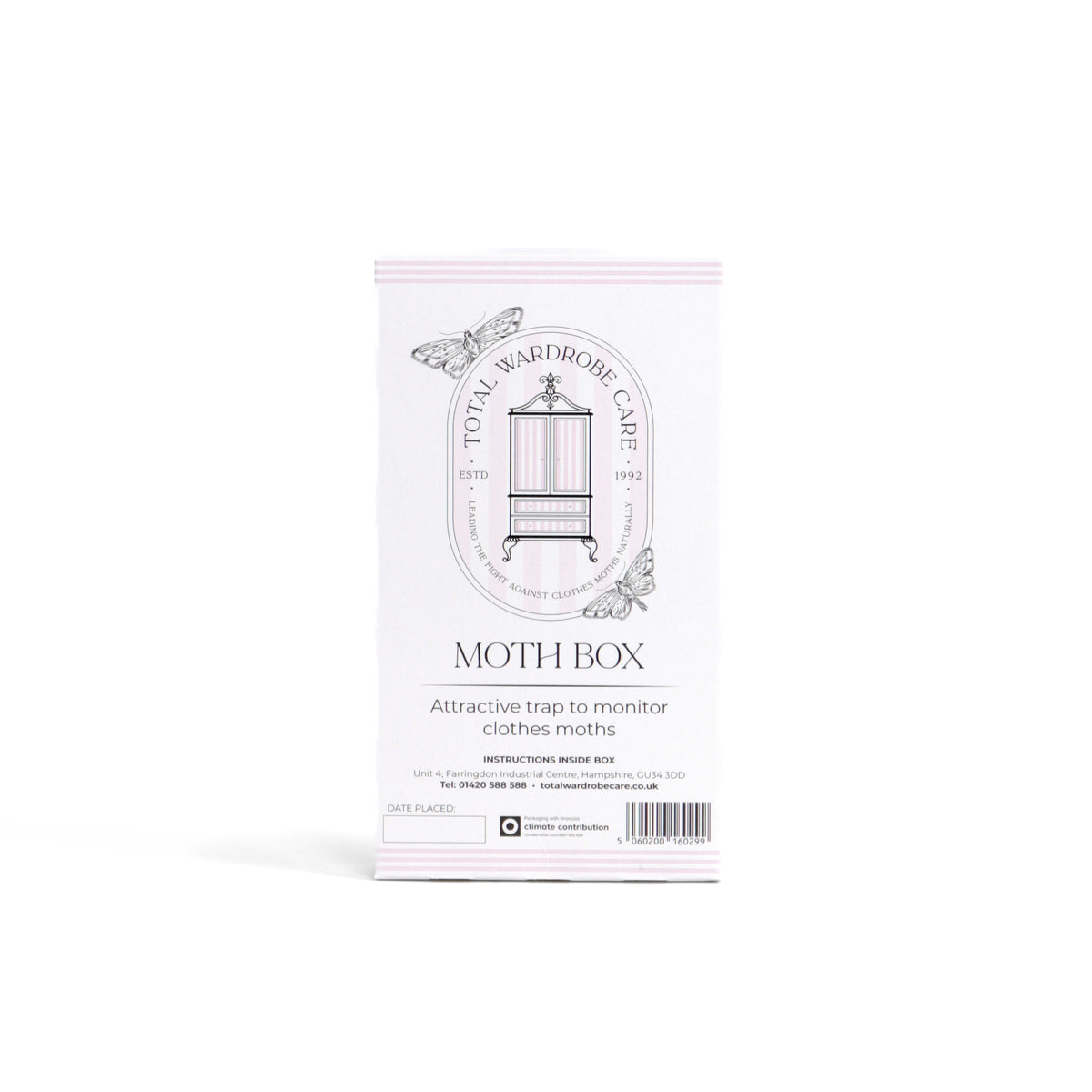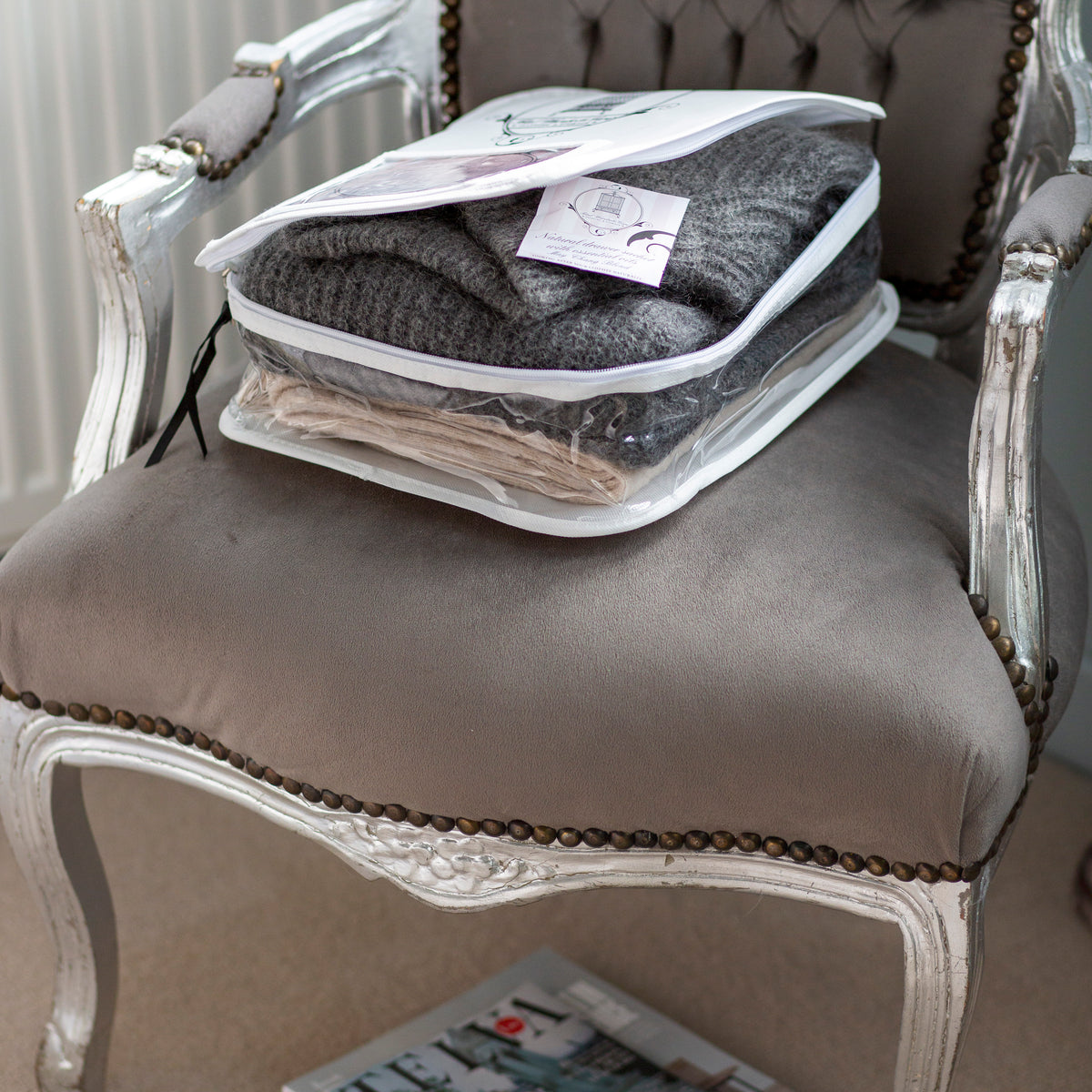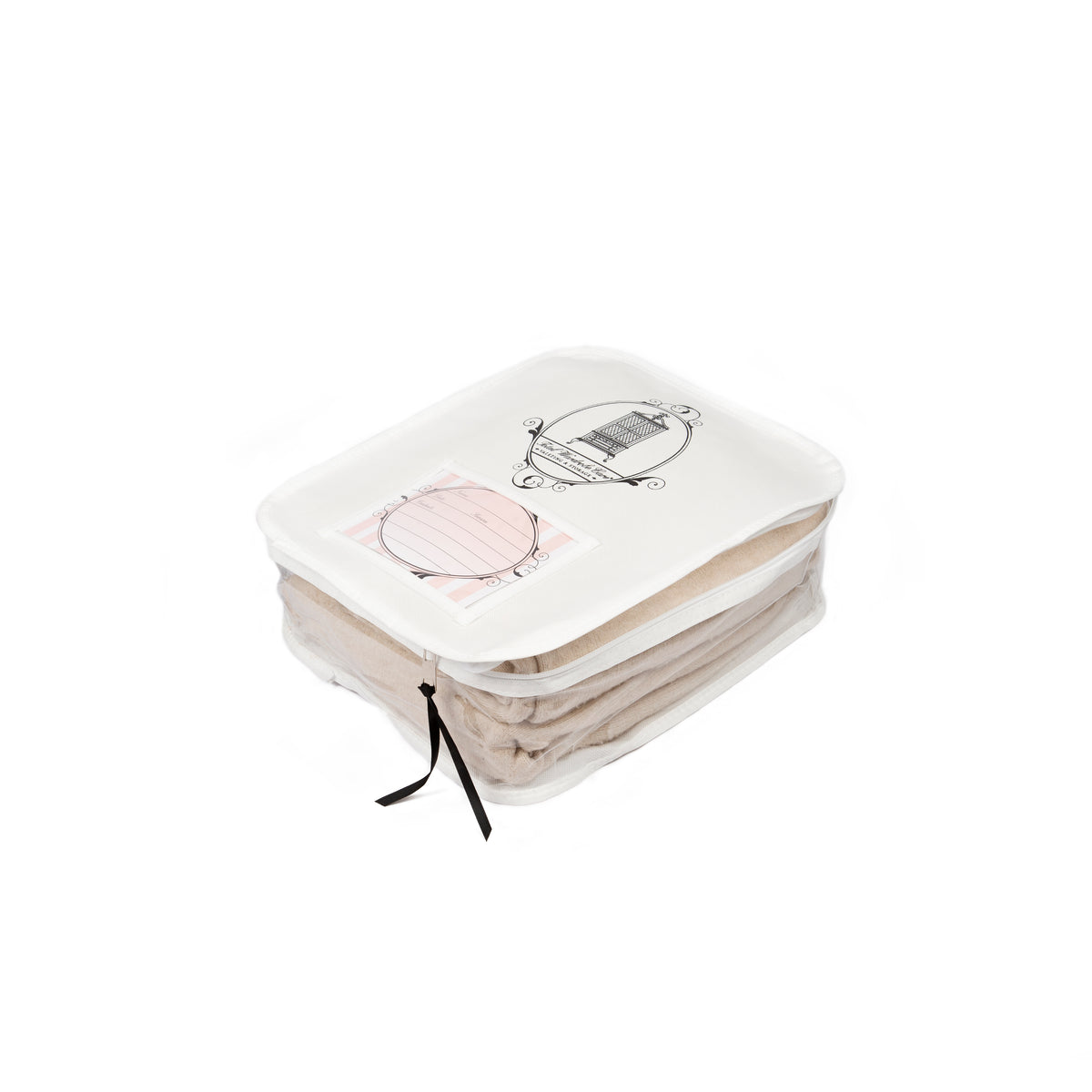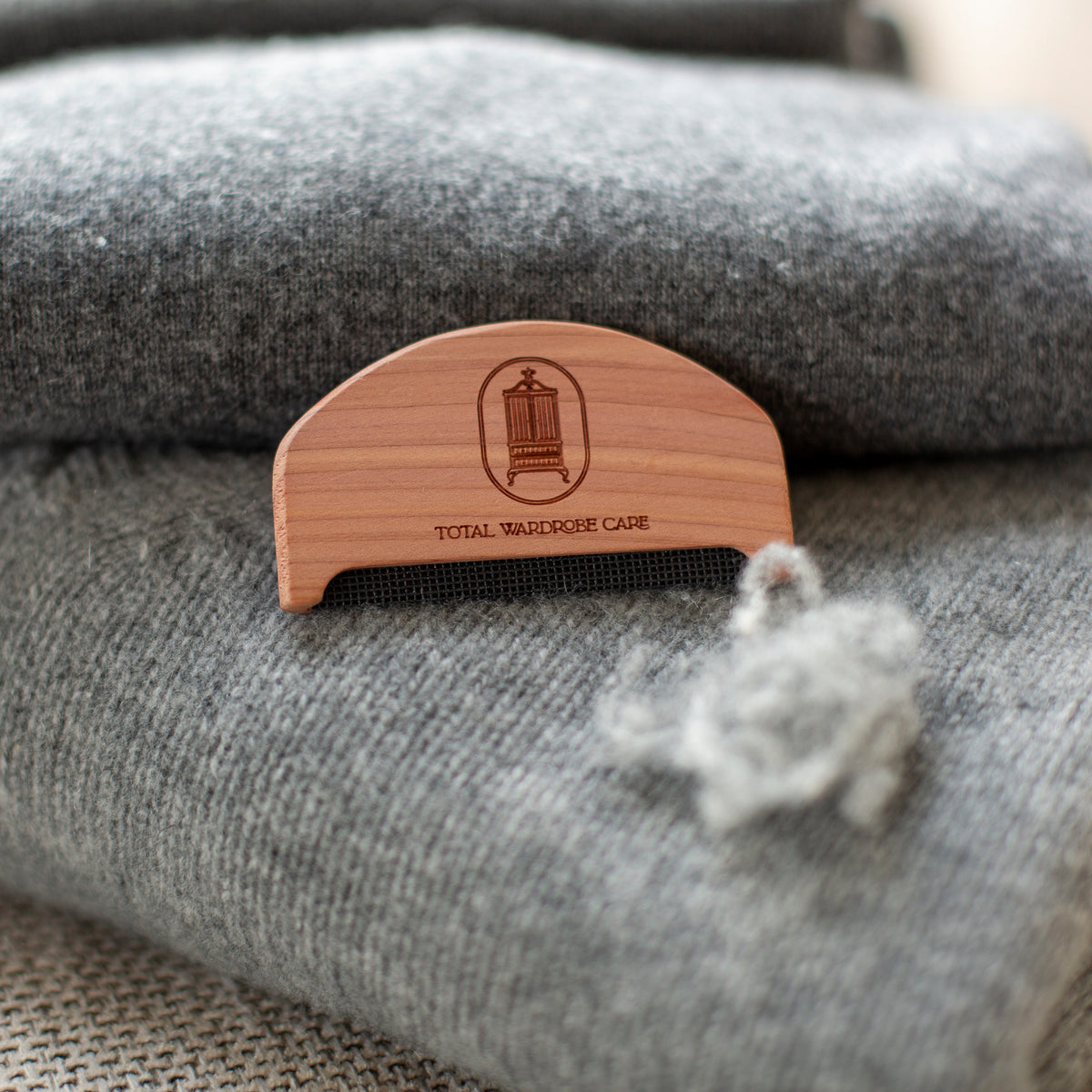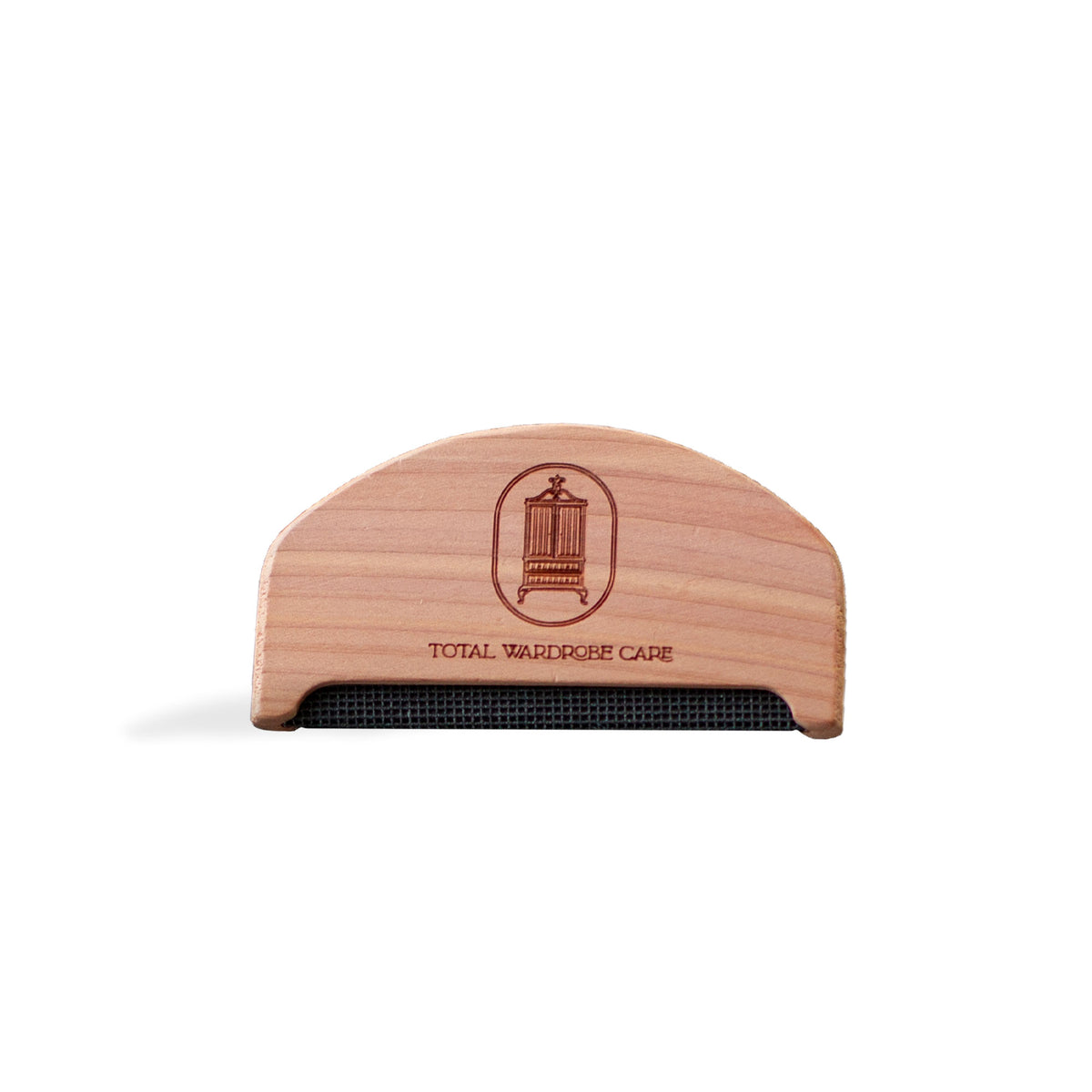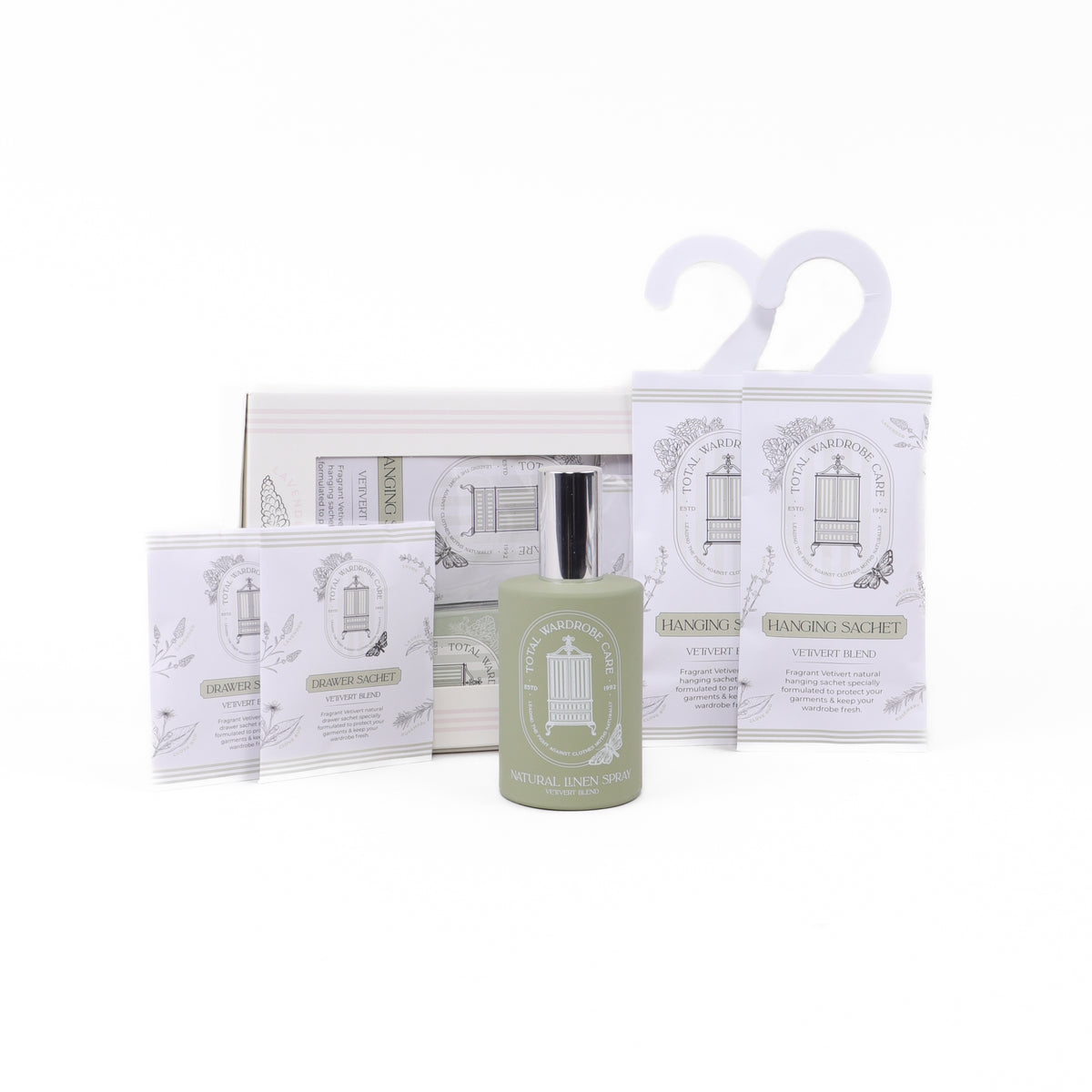CLOTHES MOTHS - TINEOLA BISSELLIELLA
According to the Butterfly conservation, there are over 2,500 moth species in the UK today. The common clothes moth, also known as the Webbing Clothes Moth (Tineola Bisselliella) is a beige colour, with a small reddish hairs on its head. The adult clothes moth is only small at 5-8mm long, so easy to miss, particularly since they like the dark.

Clothes moths are not dangerous and won't affect your health, so on the face of it they aren't viewed as one of life's biggest problems.
However, recurrent infestations cause enormous expense and left unchecked, clothes moths will destroy not just the odd cashmere jumper here and there but a wardrobe of work suits, winter coats, curtains and carpets. In fact anything that is made from natural material is on the menu.
WHERE DO CLOTHES MOTHS COME FROM?

TIP – Learn what you can about the clothes moth lifecycle. If you understand how to target each phase of its lifecycle you will develop a greater understanding of what products to use and when. Eventually, you will be able to think like a pest controller and every year your clothes moth control tasks will become second nature.
WHY DO CLOTHES MOTHS EAT CLOTHES?
ARE CLOTHES MOTHS SEASONAL?
The emergence of clothes moths is linked to the seasons, more specifically temperature. Let's start with the eggs.
The eggs hatch into larvae between 4-21 days depending on the temperature. The warmer temperature brings on faster development.
The moth larval phase is the destructive phase as the larva have the mouth parts to chew through fabrics.
Depending on temperature, the larval phase can last from 2 months in the Summer to 2.5 years if kept in consistently cold temperatures. So, even if you have fabrics in cool conditions all year round, clothes moth larvae could be eating away for all that time!
As Spring temperatures increase, the larvae pupate. This is why you see a flush of adult moths in the Spring and again in late Summer. The adults do not feed as their sole purpose is to produce the next generation. Once mated, a female clothes moth can lay up to 100 eggs so a clothes moth infestation can quickly proliferate.
TIP – As the larvae can remain hidden for so long, protect clothes in storage by putting them away in Moth-Proof Garment Bags. Clean clothes by hand if delicate or better still, dry clean before storing them.

HOW DO I STOP MOTHS EATING MY CLOTHES?
Clothes moths prefer quiet, dark places to lay their eggs. This is why wardrobes and carpets or areas under furniture or rugs are popular egg laying sites, because their larvae will hatch and remain hidden away with a bountiful food source. Adult moths are also repelled by the strong scent of certain essential oils. Our guide on 'how to get rid of moths' and our 5 steps to getting rid of moths in wardrobes advise you on the best way to prevent moths damaging your clothes.
TIP – Do everything you can to make the breeding sites of clothes moth uncomfortable. This means disturbing them. As well and regular vacuuming inside wardrobes and underneath heavy furniture, take clothes out regularly, shake them and inspect them for signs of moth damage. Store clothes with scented sachets to deter moths from entering your wardrobe. View our extensive range of Scented Sachets.
Learn how to get rid of clothes moths here.
HOW LONG DOES IT TAKE TO GET RID OF CLOTHES MOTHS?
TIP – Target each phase of the clothes moth infestation throughout the year. Start by finding out where your infestation is coming from with Moth Boxes. Deep clean and throw away thoroughly infested items. Treat rooms and wardrobes if necessary with a natural moth killer. Here's how: use The Moth Decoy as a permanent fixture to disrupt the mating cycle.
NEED HELP?
For further tips and advice on getting rid of clothes moths, head to our blog pages or feel free to contact us, we love talking about clothes moths! Take a look at some of our other anti-moth products including our Hanging Sachets, Moth Trap Box or the innovative Moth Decoy.

